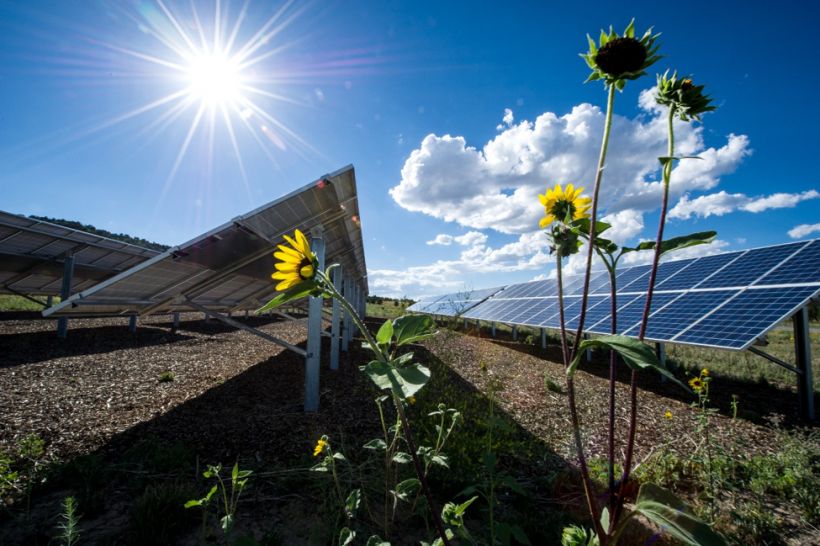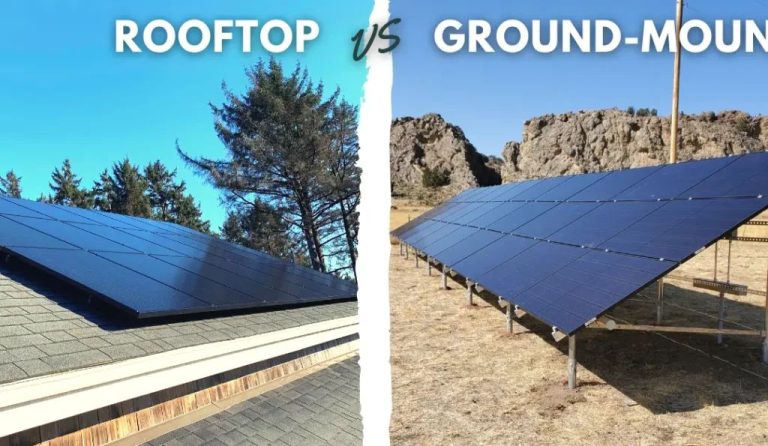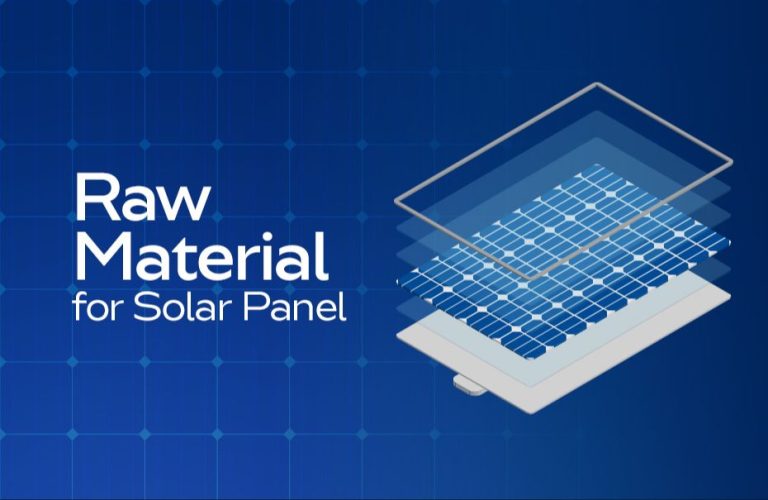New Advances In Solar Cell Efficiency
Are you tired of constantly worrying about rising electricity costs and the impact of traditional energy sources on the environment? If so, you’ll be pleased to hear that a groundbreaking development has emerged in the world of solar cell technology – an industry that continues to evolve at a remarkable pace. Scientists and engineers have made significant strides in enhancing solar cell efficiency, revolutionizing the renewable energy market. This means that harnessing the power of the sun to generate electricity is now more efficient and cost-effective than ever before. In this blog post, we will explore the latest advances in solar cell efficiency, including cutting-edge materials, innovative manufacturing techniques, and exciting new research, giving you a comprehensive understanding of how solar energy is poised to transform our lives and the world we live in. So, if you’re intrigued by the idea of harnessing the unlimited power of the sun and want to stay ahead of the curve, sit back, relax, and read on to discover the future of solar energy.

New Hybrid Perovskite Solar Cells Break Conversion Record
Exciting news has emerged in the world of solar cell technology as scientists have announced that they have accomplished a new milestone in solar cell efficiency. In a groundbreaking new development, hybrid perovskite solar cells have achieved a record-breaking conversion rate of 25.2%, surpassing the previous record of 24.2% held by the well-known silicon-based solar cells.
The secret to this achievement lies in the novel design of the hybrid perovskite solar cells, which utilize a combination of both organic and inorganic materials to capture sunlight more effectively. The hybrid perovskite solar cells were fabricated using a technique known as “thin-film deposition,” which involves depositing a thin layer of perovskite material onto a substrate.
This new breakthrough has significant implications for the renewable energy market, as it offers the potential to generate electricity in a more efficient and cost-effective manner than ever before. With further research and development, hybrid perovskite solar cells could potentially become the go-to technology for harnessing the power of the sun.
Moreover, the use of hybrid perovskite solar cells has several advantages over traditional silicon-based solar cells. These include lower manufacturing costs, improved flexibility, and increased durability. Additionally, hybrid perovskite solar cells can absorb a wider range of light wavelengths which makes them more efficient in low-light conditions.
Silicon Solar Cells Getting Boost From Newly Discovered Metamaterials
In addition to the exciting advances in hybrid perovskite solar cells, silicon-based solar cells are also getting a boost from the discovery of metamaterials. Metamaterials are engineered materials that possess artificial properties not found in natural materials. They can be designed to have unique optical properties, such as the ability to bend light in unusual ways.
Researchers have recently made progress in using metamaterials to enhance the performance of silicon-based solar cells. By incorporating these special materials into the design of the solar cells, they can enhance the absorption of light and improve the overall efficiency of the cells.
One of the key challenges in developing more efficient silicon-based solar cells has been the loss of energy due to reflection and absorption of light by other materials in the cell. With the use of metamaterials, researchers have been able to minimize these losses, leading to a significant increase in the amount of energy that can be harnessed from the sun.
Moreover, metamaterials can be designed to operate across a broader range of wavelengths, which means they can work in a variety of lighting conditions, including low-light conditions. This makes them ideal for use in a wide range of environments and applications.
Another key benefit of using metamaterials in solar cell design is that they can be integrated into existing manufacturing processes, making it easier to create more efficient and cost-effective solar cells. This has the potential to make solar energy more accessible and affordable for people all around the world.
Solar Shingles Now Cheaper To Produce Than Traditional Roofing Materials
In addition to the exciting advancements in solar cell efficiency, the latest breakthrough in solar shingle technology has taken the renewable energy market by storm. According to recent reports, solar shingles are now cheaper to produce than traditional roofing materials, making them an attractive option for homeowners looking to reduce their energy costs and contribute to a cleaner environment.
The development of solar shingles has been a game-changer in the solar industry, allowing homeowners to harness the power of the sun without the need for bulky, traditional solar panels. Solar shingles are designed to seamlessly integrate with the existing roofline of a home, providing a sleek and modern aesthetic that blends in perfectly with the surrounding environment.
Not only are solar shingles cost-effective, but they are also incredibly durable and long-lasting. The advanced materials used in their construction have been rigorously tested to ensure they can withstand the most extreme weather conditions, from hurricane-force winds to heavy snow loads.
Moreover, solar shingles are incredibly efficient, converting up to 20% of the energy from the sun into usable electricity. This means that homeowners can save money on their energy bills while also reducing their carbon footprint.
In terms of the manufacturing process, the production of solar shingles has become increasingly streamlined in recent years, making them more affordable and accessible to homeowners all around the world. And with a growing number of companies entering the solar shingle market, competition is driving prices down even further.
It’s clear that solar shingles are the future of renewable energy, offering homeowners a cost-effective, reliable, and eco-friendly alternative to traditional roofing materials. As the technology continues to evolve and improve, we can expect to see even greater advancements in solar shingle efficiency and affordability in the years to come.
Floating Solar Farms Offering New Frontier For Renewable Energy Projects
In addition to solar shingles and the remarkable gains in solar cell efficiency, another cutting-edge solution has emerged in the renewable energy industry – floating solar farms. These farms involve the installation of solar panels on large bodies of water, such as lakes, reservoirs, and oceans, offering a new frontier for renewable energy projects.
The potential benefits of floating solar farms are numerous. Firstly, they are particularly attractive options for land-scarce countries, where traditional land-based solar farms may be problematic or impossible due to a lack of suitable locations. Floating solar farms also offer unique advantages over land-based solar farms, including lower installation and construction costs, higher energy efficiency, and the potential for cooling effects on the solar panels, which can enhance overall output.
Moreover, floating solar farms pose no threat to the valuable agricultural land, forests, or other ecosystems that traditional land-based solar farms may impact. They also reduce water evaporation, thereby helping to conserve water resources.
The growth of floating solar farms has been accelerating in recent years, with projects popping up all over the world. For instance, a floating solar farm in China has a 40-megawatt capacity, making it the largest of its kind in the world. The installation of the PV system took only five months, and it is expected to produce up to 38 million kWh of electricity annually.
Other examples of floating solar farms include a 2.7 MW system in the Netherlands, a 1.2 MW installation in France, and a 2 MW solar farm in India. In addition, the world’s largest floating solar farm is scheduled to open in South Korea, producing roughly 2.6 MW electricity.
Further research is being conducted to improve the efficiency and safety of floating solar farms, including creating more durable solar panels that can withstand harsh weather conditions and waves.
Overall, floating solar farms are a promising and innovative renewable energy solution, offering a new frontier for energy projects. With their numerous benefits and the positive environmental impact they offer, it’s clear that floating solar farms will play an increasingly important role in the transition to a sustainable future.
Transparent Solar Panels Could Transform Windows Into Green Energy Producers
Transparent solar panels are yet another game-changing technology emerging in the field of solar energy. These see-through solar panels are specifically designed to absorb sunlight and convert it into electricity, all the while letting visible light pass through, allowing windows to become green energy producers in their own right.
The potential applications of transparent solar panels are vast and impressive. In addition to their use on windows and skylights in residential and commercial buildings, they could also be incorporated into vehicles and mobile devices. For example, windshields on cars could generate electricity while providing extra privacy due to their tinted appearance. Mobile devices such as smartphones could also utilize transparent solar panels on the screens and casings, enabling them to charge via sunlight exposure.
The feasibility of transparent solar panels relies heavily on the specific materials and manufacturing techniques used in their construction. One material that is gaining traction in this field is perovskite, a class of materials that has demonstrated high efficiency levels when used in solar cells. Perovskite solar cells can be made lightweight, flexible, and easily integrated into a wide range of everyday products. Other materials and techniques being explored for transparent solar panels include organic photovoltaics, dye-sensitized solar cells, and graphene.
One of the primary benefits of transparent solar panels is their ability to generate electricity while still allowing a degree of natural lighting to pass through. This can result in significant energy savings, particularly in large commercial buildings that require a lot of artificial lighting to function. Another major advantage of transparent solar panels is their low cost compared to traditional solar cells. Because of their transparency, these panels require less material for their construction, thereby reducing both the overall cost and environmental impact of producing them.
While transparent solar panels are still in the early stages of development, there are already some notable examples of their use in real-world settings. For instance, the Olympic House in Switzerland features perovskite-based transparent solar panels in its facade, generating electricity while also allowing natural light to enter the building. Similarly, Michigan State University has developed transparent luminescent solar concentrators that can be placed over windows, allowing light to pass through while capturing the energy and converting it into electricity.
Overall, transparent solar panels have enormous potential to transform the way we generate and use renewable energy. By enabling windows and other everyday products to become energy-generating assets, these panels can help us move towards a more sustainable future while also reducing energy costs and promoting greener living practices.
Dye-Sensitized Solar Cells Show Promise For Powering Small Electronic Devices
Dye-sensitized solar cells are a type of photovoltaic cell that use a dye-coated semiconductor to generate electricity from light. They are known for their high conversion efficiency, low cost, and versatility. In fact, they have already found niche applications in powering small electronic devices such as watches, calculators, and sensors.
These solar cells work by absorbing photons of light and exciting electrons in the dye molecule, which are then transferred to the semiconductor material and collected as an electric current. The dye molecules act as antennas that capture a wide range of light wavelengths, allowing for efficient energy conversion even in low light conditions. Additionally, because the dyes can be synthesized to absorb specific colors of light, dye-sensitized solar cells can be customized for optimal performance in different settings.
One major advantage of dye-sensitized solar cells is their low cost of production. Unlike traditional silicon-based solar cells, which require expensive and energy-intensive processing steps, dye-sensitized solar cells can be fabricated using simple printing and coating techniques. This makes them particularly attractive for use in consumer electronics, where cost and size constraints are key considerations.
Another benefit of dye-sensitized solar cells is their flexibility and ease of integration. The semiconducting material can be deposited onto a variety of substrates, including plastic, glass, and metal. This allows for the creation of flexible solar panels that can be shaped and molded to fit a wide range of applications. Moreover, because they are lightweight and non-toxic, dye-sensitized solar cells can be incorporated seamlessly into portable devices without adding significant weight or posing a health hazard.
Despite their many advantages, there are still some challenges that must be overcome before dye-sensitized solar cells can become a mainstream technology. The stability and durability of the cells over time is a concern, as well as the scalability of production. Nonetheless, recent advances in materials science and manufacturing techniques are helping to address these issues, and many researchers believe that dye-sensitized solar cells have the potential to revolutionize the way we generate and use energy in the future.
National Ignition Facility Breakthrough Points To Solar Power From Fusion Reaction
In addition to the recent advances in dye-sensitized solar cells, the National Ignition Facility (NIF) has made a groundbreaking breakthrough in solar power technology. The NIF, located at Lawrence Livermore National Laboratory, has successfully created a fusion reaction using lasers. This breakthrough holds immense potential for the creation of limitless, clean energy from solar power.
The NIF utilizes 192 high-powered laser beams to compress and heat hydrogen fuel pellets that then undergo fusion, which releases a tremendous amount of energy. By harnessing this energy, a renewable power source that is able to provide energy for centuries could be created. This technology has the potential to solve the global energy crisis while simultaneously reducing carbon emissions that contribute significantly to climate change.
The implications of this breakthrough are staggering, as scientists have long been searching for a sustainable and clean alternative to traditional energy sources. The NIF’s success with this technology suggests that solar power derived from fusion reactions may soon become a reality, providing humanity with a truly unlimited power source. The process behind this technology is complex and involves numerous interdisciplinary fields, but researchers are hopeful that continued efforts will lead to the creation of commercially-viable fusion reactors within a few decades.
While dye-sensitized solar cells offer a viable option for creating clean energy and reducing costs, the potential of solar power from fusion reactions could truly revolutionize the energy industry. As research and development into this technology continues, it is clear that the future of solar energy is bright and full of promise.
Tandem Solar Cells Combining Different Materials Reach New Heights In Efficiency
Another significant advancement in the world of solar cell technology is the development of tandem solar cells that combine different materials, achieving unprecedented levels of efficiency. These cells, typically made up of two or more layers of varying semiconductor materials, are capable of absorbing different portions of the solar spectrum, extending the range of wavelengths that can be converted into electricity. As a result, tandem solar cells are capable of producing more power per unit of area than traditional single-junction cells, making them highly attractive for use in commercial and industrial applications.
One promising example of this technology is the perovskite/silicon tandem solar cell, which leverages the high efficiency of perovskite cells with the stability and durability of silicon. Studies have shown that these cells can achieve efficiencies above 30%, representing a significant improvement over traditional solar cells. This is due to the complementary properties of perovskite and silicon cells, with the former absorbing the high-energy portion of the solar spectrum and the latter capturing the lower-energy wavelengths.
Another key benefit of tandem solar cells is their ability to operate effectively in low-light and variable weather conditions. This is particularly relevant for regions with high latitudes or areas prone to cloud coverage, where traditional solar cells may struggle to produce adequate amounts of energy. By leveraging the versatility and efficiency of tandem solar cells, these regions can tap into the full potential of solar energy and reduce their reliance on fossil fuels.
The development of tandem solar cells is an exciting trend in the renewable energy sector, as it promises to deliver more efficient and cost-effective solutions for generating electricity from sunlight. As research into these technologies continues, we can expect to see even greater advances in solar cell efficiency, unlocking new possibilities for powering our homes, businesses, and communities with clean, sustainable energy.
Solar Paint Promising Low-Cost Way To Dramatically Increase Solar Farm Capacity
Solar paint is a highly promising technology that could revolutionize the renewable energy industry, offering a low-cost way to dramatically increase solar farm capacity. This innovative solution involves spraying a special photovoltaic paint onto a variety of surfaces, such as roofs, walls, and windows, effectively turning them into solar panels. The solar paint contains tiny organic and inorganic particles that can generate electricity when exposed to sunlight, making it an ideal solution for large-scale energy production.
The potential benefits of solar paint are vast and far-reaching, as it can be applied to virtually any surface, making it possible to transform entire buildings into energy-generating structures. This opens up a world of possibilities for integrating solar energy into our everyday lives, from powering homes and businesses to charging electric vehicles and mobile devices.
One of the major advantages of solar paint is its low cost and ease of application. Unlike traditional solar panels, which require expensive materials and specialized installation, the photovoltaic paint can be sprayed onto surfaces using simple equipment, making it accessible to a wider range of users. This makes it an ideal solution for developing countries and remote areas with limited access to electricity, where the installation of traditional solar panels may not be feasible or cost-effective.
Another key benefit of solar paint is its scalability. By applying the paint to large surface areas, such as roofs or walls, solar farm capacity could be dramatically increased, providing a reliable source of energy with minimal environmental impact. This could be particularly useful in urban areas, where space is at a premium and traditional solar farms may not be possible.
Despite its many advantages, solar paint is still in the early stages of development, with researchers and scientists working to improve its efficiency and durability. However, promising results have already been achieved, with some prototypes demonstrating an efficiency of around 11%, comparable to that of traditional solar panels.
Overall, solar paint represents an exciting new direction in the renewable energy sector, offering a low-cost, scalable, and accessible solution for generating electricity from sunlight. As research and development continue, we can expect to see even greater advances in solar paint technology, unlocking new possibilities for clean, sustainable energy production and reducing our dependence on fossil fuels.
Spider Silk Inspires Sticky Gel For Mounting Solar Panels On Diverse Surfaces
In the quest for increased solar energy adoption, researchers are constantly seeking new and innovative ways to mount solar panels on diverse surfaces to maximize their efficiency and durability. In a remarkable breakthrough, scientists have turned their attention to spider silk for inspiration and have developed a sticky gel that can be used to mount solar panels on a variety of surfaces with ease.
The new adhesive gel is inspired by spider silk, which is known for its remarkable strength and flexibility. The gel is made up of a combination of silica nanoparticles and a water-based polymer, which together create a strong, flexible, and environmentally friendly adhesive that can stick to a variety of surfaces. The polymer is also able to absorb water, which helps to create a stronger bond between the gel and the surface it is adhered to.
What makes this new adhesive gel so exciting is its potential to increase the efficiency and durability of solar panels. Unlike traditional adhesive materials, which can degrade over time, the spider silk-inspired gel is designed to remain strong and sticky even in harsh weather conditions, making it an ideal solution for solar panel installations in challenging environments. It also has the potential to reduce the cost and complexity of solar panel installations, as it can be easily applied to a variety of surfaces, including rough, textured, or curved surfaces.
The use of spider silk as a source of inspiration for the development of the sticky gel is significant, as spider silk is one of the strongest and most resilient materials known to science. It is known to be five times stronger than steel and more elastic than rubber, making it an ideal material for a variety of industrial and medical applications. By harnessing the strength and flexibility of spider silk, scientists have been able to create an innovative adhesive that has the potential to transform the renewable energy industry.
Colored Solar Cells Captivate With Hints Of Green While Still Being Highly Practical
In addition to adhesive innovations, the field of solar cell technology has seen exciting progress in the quest to develop more aesthetically pleasing solar panels. As attentions are turning towards building integration, technology that can provide both environmental benefits and be aesthetically pleasing has become more important in the solar industry. This has led to the development of colored solar cells, which have the potential to enhance the visual appeal of solar panels.
Colored solar cells are not only eye-catching but highly practical as well. These cells can be designed to match or complement the colors of the surrounding environment, making solar panels a more integrated and visually harmonious part of a building’s architecture. In fact, this technology has already been used in urban areas where building codes restrict the use of unsightly solar panels.
The practicality of colored solar cells extends beyond their visual appeal. These cells are still highly efficient in the conversion of sunlight to electricity, without sacrificing performance for their aesthetic value. The cells are made with the same high-quality materials as traditional solar cells, including silicon, and can be manufactured using standard processes.
The innovative use of color is creating new opportunities for the integration of solar panels in all kinds of structures, from residential homes to commercial buildings. The customization of colored solar cells opens the door to exciting possibilities, with users able to choose from an almost unlimited range of shades and hues. With their ability to blend in seamlessly with their surroundings and provide clean energy at the same time, colored solar cells are set to be one of the most promising developments in solar technology.
Luminescent Solar Concentrators Redirect Photons For Multi-Junction Cell Boost
In addition to the development of aesthetically pleasing colored solar cells, the field of solar cell technology has seen incredible advancements when it comes to boosting efficiency. One such breakthrough is the use of luminescent solar concentrators (LSCs).
LSCs utilize a clear plastic material doped with light-absorbing materials which absorb light and re-emit it at a lower energy level, effectively “concentrating” photons towards the edges of the material. Light that is emitted at the edges of the LSC is then directed towards a solar cell, which converts the concentrated light into electricity. This innovative technique effectively redirects photons that had previously been “lost” in the solar cell, increasing overall efficiency.
Moreover, LSCs allow for the use of multi-junction solar cells – highly efficient cells that are comprised of stacked layers, each of which can absorb a different spectrum of light. LSCs can redirect specific wavelengths of light to specific layers of the multi-junction cell, further increasing the efficiency of the solar panel.
One of the most exciting aspects of LSCs is their potential to overcome one of the most significant challenges of traditional solar panels – their reduced efficiency in lower light conditions. LSCs are capable of receiving and concentrating light from a wider range of angles and directions, including scattered and diffuse light. This means they are highly efficient even in low-light situations, making them ideal for use in less sunny regions or in environments where direct sunlight is obstructed.
Luminescent solar concentrators have the potential to revolutionize the way we think about solar energy, opening up new opportunities for highly efficient, low-cost solar power. With ongoing research and development, we are likely to see even more exciting breakthroughs in solar cell technology in the near future.
Conclusion
In conclusion, the future of solar energy has never looked brighter. With continuous research and innovation, we are witnessing breakthrough after breakthrough in the field of solar technology. From hybrid perovskite cells breaking conversion records to metamaterials boosting the efficiency of silicon cells, it is clear that the potential for solar power is limitless. The development of cheaper solar shingles and floating solar farms have made renewable energy more accessible and efficient for everyday use. As we continue to explore new frontiers, transparent solar panels could soon transform our windows into green energy producers while dye-sensitized cells offer a promising solution for powering small electronic devices. And who would have thought that a fusion reaction at the National Ignition Facility could pave the way for even more advanced forms of solar power? Tandem cells using varying materials and even solar paint are all proving to be viable options for harnessing the sun’s energy on a larger scale. And let’s not forget about spider silk-inspired gel that could revolutionize how we mount solar panels on various surfaces with its strong adhesive properties. The possibilities are endless, and the advancements in colored solar cells show that practicality does not need to be sacrificed for aesthetics. With luminescent solar concentrators redirecting photons for increased efficiency, it is safe to say that we are well on our way towards a future powered by clean and sustainable energy sources. So let us continue to support and invest in these remarkable innovations as we work towards a greener tomorrow.





